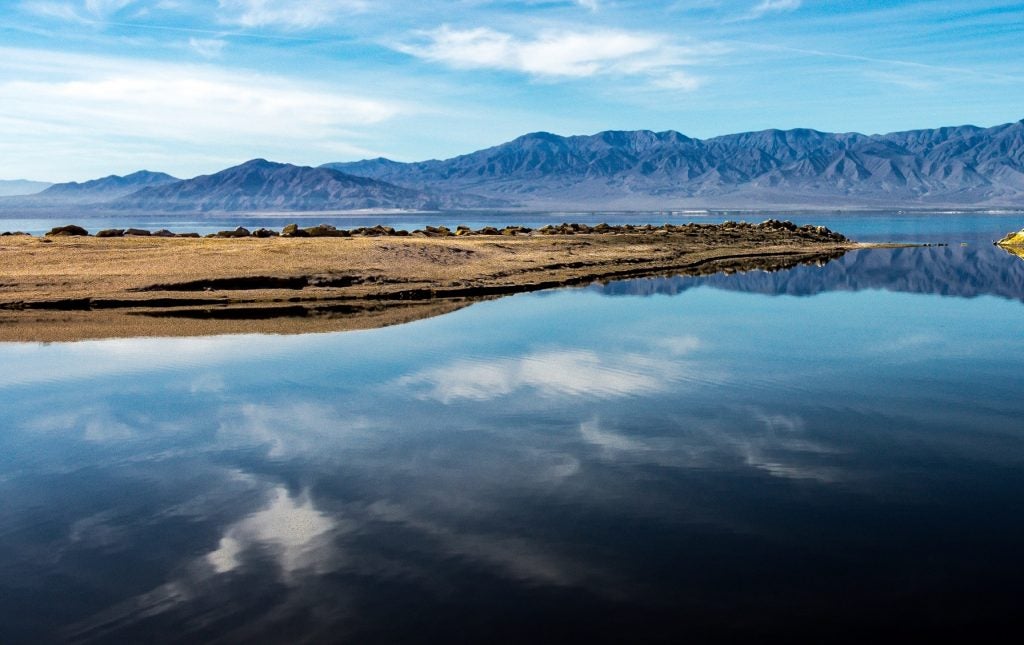Two important water reports were released recently that address the lack of safe and affordable drinking water in some California communities, despite our state’s position as an environmental leader. Read More
Growing Returns
Selected tag(s): Newsom
Don’t let funding dry up for safe and affordable drinking water
Newsom’s Water Resilience Portfolio puts California on course to climate resilience
It is encouraging that one of California Gov. Gavin Newsom’s first actions in 2020 was the Jan. 3 release of the much-anticipated Water Resilience Portfolio.
While Newsom has been forced to address climate change on many fronts during the past year – think wildfires, blackouts and automobile standards – the state’s myriad water challenges must remain a priority. Our state’s water system is decades old and needs to be re-envisioned for a new era. Read More
State plans to jump-start Salton Sea work, but locals remain frustrated
This post was co-authored by Pablo Garza and Ronna Kelly.
The Salton Sea is California’s largest lake, but it’s hard to grasp its immense size – and beauty – until you see it with you own eyes. Last week, roughly 200 people gathered in this unique area – both residents and leaders from around the Salton Sea and from outside the region – for the Salton Sea Summit, a conference that explored the many challenges and solutions facing the Salton Sea region.
The summit was important because, as California Secretary for Natural Resources Wade Crowfoot noted during his keynote on the first day, the Salton Sea has “major problems.”
Chief among these: The Salton Sea is receding.
The shrinking of the Salton Sea is a longer-term trend that was exacerbated by the largest rural-urban water transfer in the U.S., finalized in 2003. Under the transfer, the Imperial Irrigation District agreed to send up to 300,000 acre-feet of Colorado River water per year to Los Angeles and San Diego. Since 2003, the Sea has receded more rapidly, exposing some 40 acres of new shoreline and toxic dust. This dust, in turn, is contributing to already poor air quality and high rates of respiratory illnesses in the region.
As part of the transfer agreement, the state committed to thousands of acres of dust suppression and habitat restoration projects, and state lawmakers and voters have approved $365 million in funding for such projects. But action has long been stalled, and local residents and leaders are fed up.
This frustration was evident at the summit and reached a boiling point on Tuesday when the Imperial County Board of Supervisors voted unanimously to declare a local emergency for air pollution at the Salton Sea. The vote came just days after state leaders stressed efforts to jump-start long-delayed projects at the summit.

The Salton Sea is California’s largest lake, covering 330 square miles, and a major drop along the Pacific Flyway for migratory birds. But it is receding, threatening to create a public health and ecological crisis. (Photo Credit: Kevin Dooley)
We need a new financial model to address California’s most pressing environmental problems
This post was co-authored by Ann Hayden of Environmental Defense Fund, Katie Riley of Environmental Incentives, and John Cain of American Rivers
Over the coming decade, the state of California will spend billions of dollars to restore habitat to protect endangered species and mitigate infrastructure improvements. But many existing institutions have been stuck in a project-by-project funding model that limits their ability to leverage private capital, integrate different funding sources or even ensure their desired outcomes are achieved.
Without private capital or partnerships, good conservation projects risk getting stuck in the development and permitting stages for decades, or even stalling out indefinitely. This is particularly true for conservation of large landscapes.
Fortunately, a new approach to conserving habitat is building momentum in California that includes proponents beyond just environmentalists. The private sector is taking on more restoration projects, and state agency staff are showing a greater willingness than ever to leverage private sector partnerships and deliver results more quickly. Read More
California water leaders offer recommendations for Governor-elect Gavin Newsom
A friend complaining about her skyrocketing water bill. Parents worried about bathing their children in water known to be carcinogenic. Witnessing young salmon once again flourish on seasonal rice fields.
These are just a few of the water stories that colleagues and I, representing a range of sectors within the Central Valley and coastal region of California, shared in a new report that provides recommendations for incoming Gov. Gavin Newsom to create a healthier and more resilient water future for the state.
We believe that sharing our own first-person narratives is a powerful way to highlight the critical importance of engaging neglected constituencies, fostering creative partnerships and developing innovative funding mechanisms for water management in California. Read More









